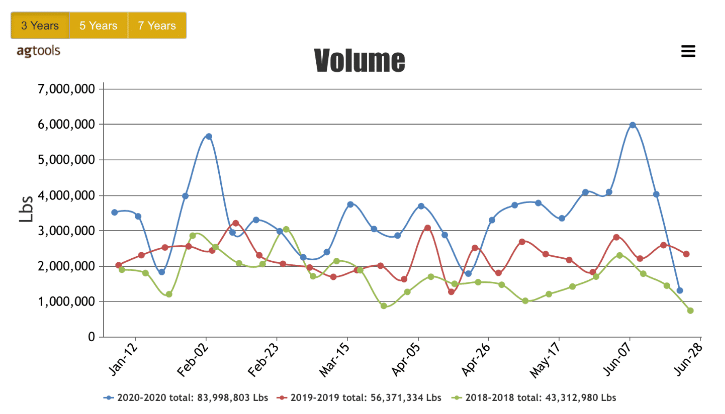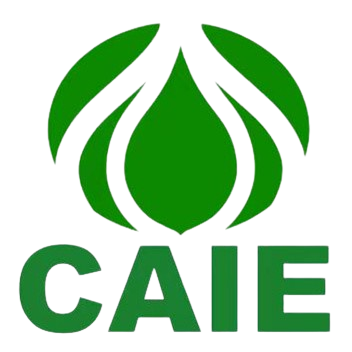El humilde ajos El clavo, un ingrediente básico en la cocina de todo el mundo, está sujeto a una compleja interacción de factores que influyen en su precio en el mercado mundial. Comprender esta dinámica es crucial para cualquiera que se dedique a comprar, vender o simplemente consumir este penetrante ingrediente. Veamos cuáles son los principales factores que influyen en su precio:
1. Oferta y demanda: El quid de la cuestión
En el fondo, el precio del ajo, como el de cualquier otra mercancía, depende del principio económico fundamental de la oferta y la demanda.
- Producción mundial: La cantidad de ajo que se produce cada año en el mundo es el principal impulsor de la oferta. Factores como la climatología (sequía, inundaciones, condiciones favorables de cultivo), los brotes de enfermedades y la superficie dedicada al cultivo del ajo contribuyen a las fluctuaciones de la oferta. Una cosecha abundante puede dar lugar a un excedente que presione los precios a la baja, mientras que una mala cosecha puede crear escasez e impulsar los precios al alza.
- Demanda mundial: Por el lado de la demanda, el apetito por el ajo de los principales países importadores desempeña un papel crucial. El crecimiento demográfico, el aumento de los ingresos (que conlleva cambios en la dieta y un mayor consumo de ingredientes que realzan el sabor, como el ajo) y la evolución de las tendencias culinarias influyen en la demanda mundial. Si la demanda supera a la oferta, es probable que suban los precios.
- Equilibrio del mercado: El mercado del ajo busca constantemente el equilibrio entre la oferta y la demanda. El punto en el que la cantidad ofertada se encuentra con la cantidad demandada es el precio de equilibrio. Sin embargo, este equilibrio es un objetivo móvil, que se ajusta constantemente en respuesta a los factores mencionados anteriormente.

2. Estacionalidad: Aprovechar las olas de la cosecha
Los ajos, a diferencia de otros cultivos disponibles todo el año, tienen distintas temporadas de cosecha que influyen significativamente en su precio.
- Ciclos de cosecha: En el hemisferio norte, el ajo suele cosecharse a finales de primavera y en verano. Por el contrario, los productores del hemisferio sur lo cosechan durante sus respectivos meses de otoño e invierno. Estos periodos de cosecha determinan cuándo los ajos frescos inundan el mercado.
- Fluctuaciones de precios: Como era de esperar, los precios del ajo tienden a ser más bajos durante las temporadas altas de cosecha, cuando la oferta es abundante. Los agricultores están ansiosos por vender sus cosechas recién recolectadas, y los compradores tienen muchas opciones. Sin embargo, cuando termina la temporada de cosecha y disminuye la oferta, los precios suelen subir debido al aumento de los costes de almacenamiento y a la disponibilidad limitada.
- Almacenamiento e inventario: La capacidad de almacenar y conservar el ajo durante periodos prolongados desempeña un papel crucial a la hora de mitigar la volatilidad de los precios a lo largo del año. Las cámaras frigoríficas ayudan a mantener la calidad y prolongan la vida útil, lo que permite a los proveedores satisfacer la demanda incluso fuera de temporada. Sin embargo, el almacenamiento tiene un coste, que se tiene en cuenta en el precio.
3. Calidad y variedad: No todos los ajos son iguales
Como cualquier producto agrícola, la calidad del ajo puede variar considerablemente, y esta variabilidad se refleja en su precio.
- Ajos Grados: Para estandarizar las evaluaciones de calidad, el ajo suele clasificarse en función de factores como el tamaño del bulbo (diámetro o peso), la uniformidad (consistencia de forma y tamaño dentro de un lote), el color (blancura o pureza del color para variedades específicas) y la presencia de manchas (magulladuras, cortes o decoloración). Las calidades superiores, que representan una calidad superior, se venden a precios más altos, mientras que las inferiores suelen venderse con descuento.
- Preferencias varietales: Más allá de los grados generales de calidad, algunas variedades de ajo son apreciadas por sus perfiles de sabor únicos, sus usos culinarios o incluso sus cualidades estéticas. Por ejemplo, el ajo español "Purple Stripe", de sabor intenso y vetas moradas visualmente atractivas, suele tener un precio más elevado debido a su limitada disponibilidad y a su codiciado sabor.
- Organic Premium: En los últimos años ha aumentado la demanda de productos ecológicos, y el ajo no es una excepción. Los ajos ecológicos, cultivados sin pesticidas, herbicidas ni fertilizantes sintéticos, suelen tener un precio superior. Este sobreprecio refleja los mayores costes de producción asociados a las prácticas de agricultura ecológica y la disposición de los consumidores a pagar un sobreprecio por lo que perciben como un producto más sano y respetuoso con el medio ambiente.
4. Fluctuaciones monetarias: El impacto en el comercio mundial
El ajo es una mercancía que se comercia en todo el mundo y, como tal, su precio está sujeto a las fluctuaciones de los tipos de cambio.
- Comercio internacional: Los principales países productores de ajo, como China y España, exportan una parte importante de su cosecha para satisfacer la demanda mundial. Del mismo modo, los países con un elevado consumo de ajos pero una producción nacional limitada, como Estados Unidos, dependen en gran medida de las importaciones. Estas transacciones internacionales suelen realizarse en dólares estadounidenses, por lo que los tipos de cambio son un factor crucial.
- Repercusiones monetarias: Cuando la moneda de un país se debilita frente al dólar estadounidense, sus exportaciones de ajos resultan más baratas para los compradores extranjeros. Esto puede aumentar la demanda de sus ajos, con la consiguiente subida de precios. A la inversa, una moneda nacional fuerte puede encarecer las exportaciones, frenando la demanda y presionando los precios a la baja.
- Cobertura de divisas: Para mitigar los riesgos asociados a las fluctuaciones monetarias, los importadores y exportadores de ajo recurren a menudo a estrategias de cobertura. Estas estrategias implican el uso de instrumentos financieros para bloquear los tipos de cambio para futuras transacciones, proporcionando seguridad de precios frente a la volatilidad del mercado.
5. Factores geopolíticos: La imprevisibilidad y sus consecuencias
El comercio mundial del ajo, como cualquier otro comercio internacional, es vulnerable a los acontecimientos geopolíticos y a las políticas que pueden interrumpir las cadenas de suministro e influir en los precios.
- Políticas comerciales: Las barreras comerciales impuestas por los gobiernos, como los aranceles (impuestos sobre las importaciones), los contingentes (límites a las cantidades importadas) o los acuerdos comerciales (condiciones comerciales preferenciales entre países), pueden afectar significativamente al flujo de ajos entre naciones. Por ejemplo, un arancel sobre los ajos importados puede encarecerlos para los compradores nacionales, protegiendo potencialmente a los productores locales, pero también aumentando los precios para los consumidores.
- Inestabilidad política: Los disturbios políticos, los conflictos o la inestabilidad en los principales países productores o consumidores de ajo pueden alterar las cadenas de suministro y provocar la volatilidad de los precios. Por ejemplo, si una de las principales regiones productoras de ajo experimenta una agitación política que interrumpe la cosecha o el transporte, el suministro mundial podría verse afectado, provocando subidas de precios.
- Intervenciones gubernamentales: Los gobiernos pueden intervenir en los mercados agrícolas por diversas razones, y sus acciones pueden influir en los precios del ajo. Por ejemplo, un gobierno podría aplicar restricciones a la exportación para garantizar el suministro nacional, lo que podría limitar la disponibilidad mundial y hacer subir los precios. A la inversa, las subvenciones o los controles de precios destinados a apoyar a los productores nacionales de ajos pueden repercutir en la dinámica del mercado e influir en los precios.
6. Transporte y logística: De la granja a la mesa
El viaje del ajo de la granja a la mesa del consumidor implica una compleja red de transporte y logística, todo lo cual contribuye a su precio final.
- Gastos de envío: El coste del transporte del ajo desde las regiones productoras hasta los mercados consumidores es un factor importante en su precio. Factores como el precio del combustible, las rutas de transporte y el modo de transporte (marítimo, aéreo o por camión) influyen en los costes de envío. A medida que aumentan los costes de transporte, también lo hace el precio del ajo.
- Interrupciones en la cadena de suministro: Acontecimientos imprevistos, como catástrofes naturales, problemas de infraestructura o conflictos laborales, pueden interrumpir las cadenas de suministro, provocando retrasos y un aumento de los costes. Por ejemplo, el cierre de un puerto a causa de un huracán podría retrasar los envíos de ajo, con el consiguiente riesgo de deterioro y reducción de la oferta, lo que acabaría repercutiendo en los precios.
- Almacenamiento y manipulación: El almacenamiento y la manipulación adecuados a lo largo de la cadena de suministro son esenciales para mantener la calidad del ajo y minimizar las pérdidas. El ajo es un producto perecedero, y un control inadecuado de la temperatura, la humedad o la manipulación puede provocar su deterioro, reduciendo la oferta disponible y aumentando potencialmente los precios.
Tabla: Factores clave que influyen en los precios del ajo
| Factor | Impacto en los precios |
|---|---|
| Condiciones meteorológicas | Afecta al rendimiento y la calidad, lo que provoca fluctuaciones de precios |
| Calidad y fertilidad del suelo | Influye en los costes de producción y los rendimientos |
| Técnicas agrícolas | Afecta a la productividad y la rentabilidad |
| Coste de los insumos | El encarecimiento de los insumos hace subir los precios del ajo |
| Manipulación de la cosecha | Una mala manipulación puede reducir la oferta y subir los precios |
| Almacenamiento y transporte | Afecta a la calidad y la disponibilidad, lo que repercute en los precios |
| Demanda mundial y local | La alta demanda hace subir los precios, la baja los reduce |
| Normativa comercial | Los aranceles y las restricciones pueden aumentar los precios |
| Tipos de cambio | Las fluctuaciones afectan a la competitividad de las exportaciones |
| Inflación | Aumenta los costes de producción y distribución |
| Estabilidad económica | Influye en la demanda de los consumidores y en los precios |
| Estacionalidad y ciclos | Las variaciones estacionales de la oferta provocan cambios en los precios |
| Brotes de plagas y enfermedades | Reduce la oferta y aumenta los precios |
| Interrupciones del suministro mundial | Las catástrofes naturales y las pandemias perturban las cadenas de suministro |
Navegar por el mercado del ajo: Una empresa compleja pero esencial
Comprender los múltiples factores que influyen en los precios del ajo es esencial para cualquiera que participe en este mercado mundial. Al mantenerse informados sobre las tendencias de la producción mundial, las influencias estacionales, las consideraciones de calidad, los acontecimientos geopolíticos y la dinámica del transporte, los participantes en el mercado pueden tomar decisiones más informadas, mitigar los riesgos y navegar por las fluctuaciones de precios inherentes a este ingrediente aromático y esencial.
Guía completa del mercado del ajo:.Los 10 secretos del mercado del ajo: Una guía completa
